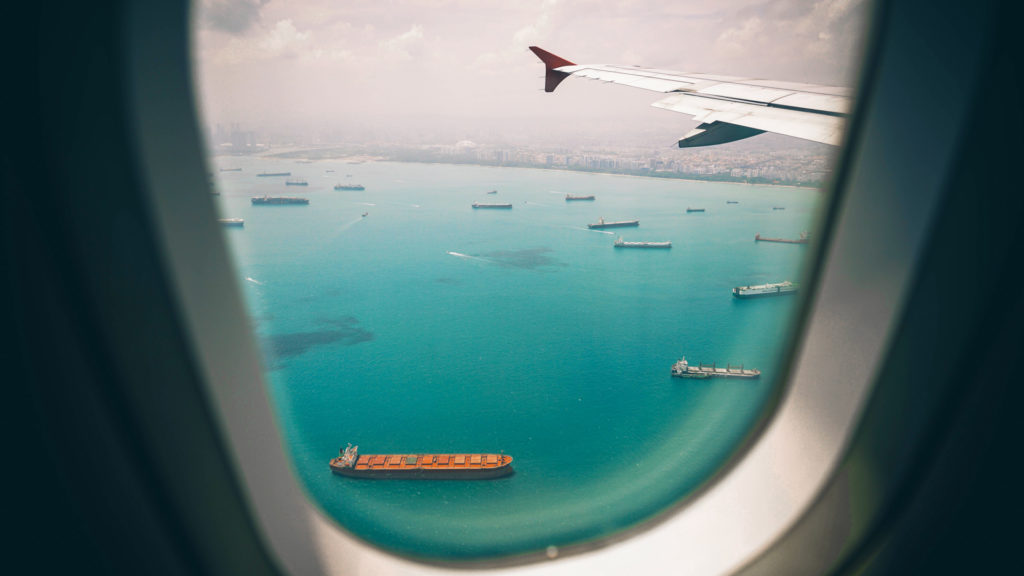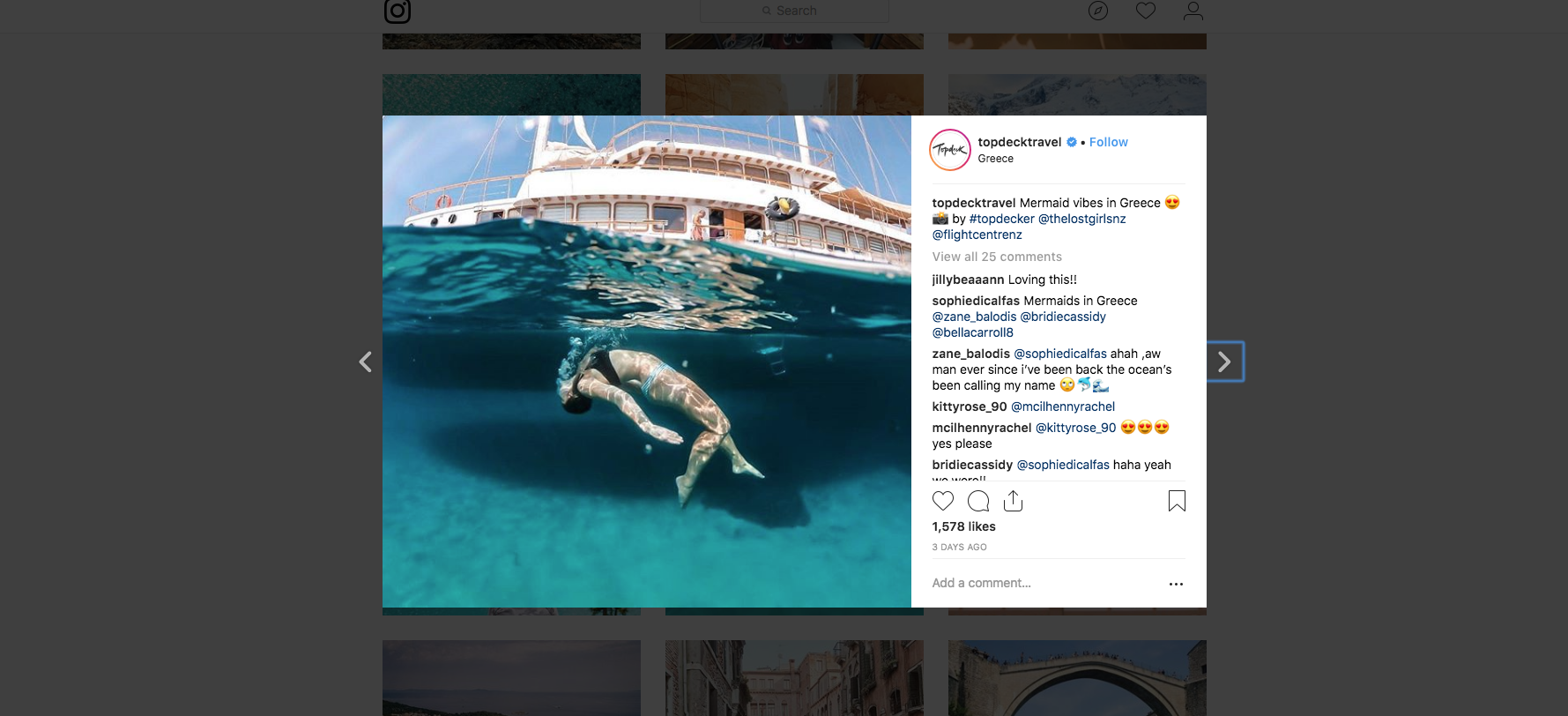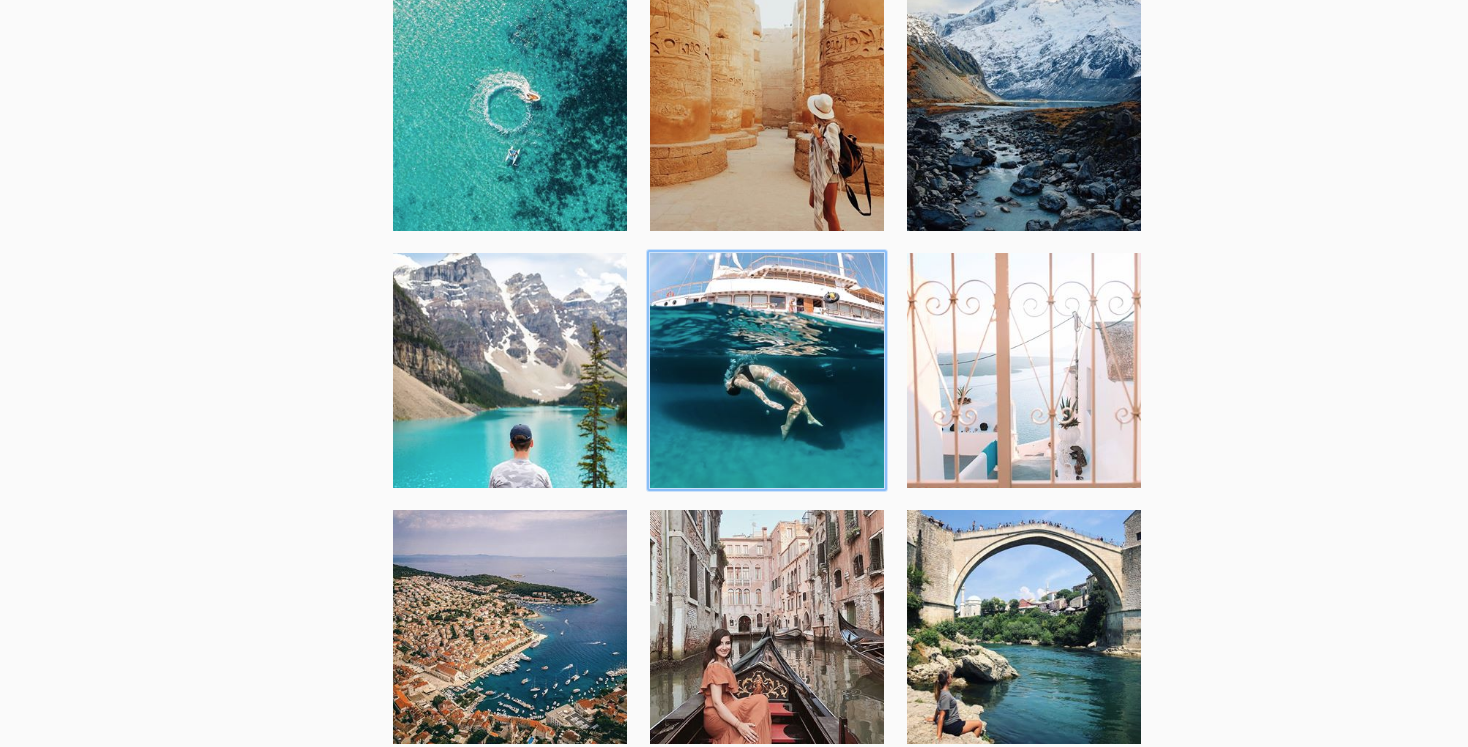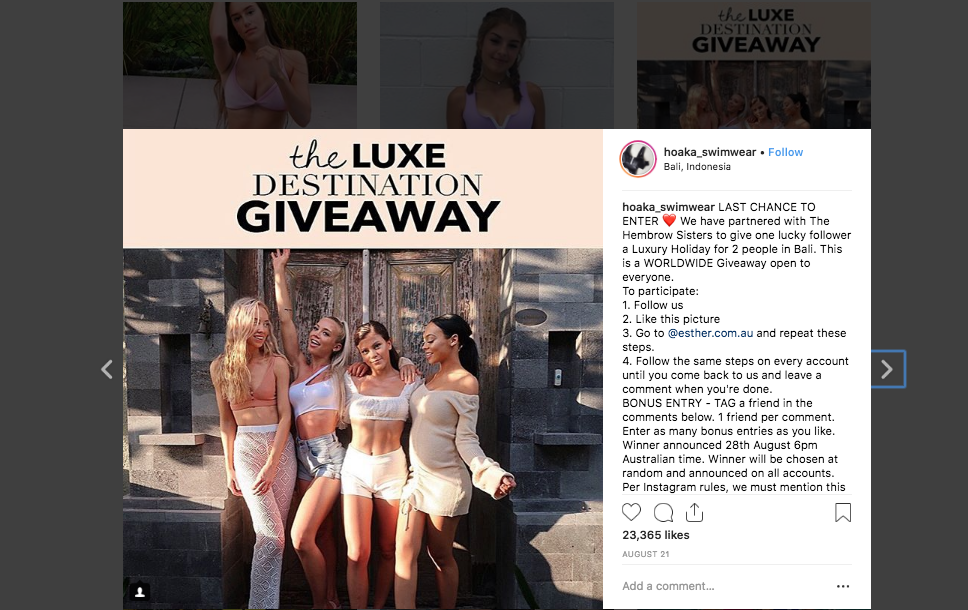How To: Travel Marketing for Agencies & Travel Businesses

What is Travel Marketing
Travel marketing, also referred to as travelling marketing is a very specific form of marketing that targets the travel industry (shocking we know).
It combines digital marketing for travel and tourism with more traditional marketing elements – the usage of SEO, customer personas, content strategy, and more – to create campaigns and smart, strategic solutions targeted exclusively to the travel industry.
It involves travel agencies, travel products, travel services and others all to do with travel companies.
Travel marketing is not only for agencies but for tour companies, excursion planners and more.
If you help travellers plan their dream trip, this guide will help you reach them.
Since the travel industry is such a broad industry, it is essential for the agency you choose to aid you with your marketing and graphic design efforts has knowledge in the travel marketing sphere.
Traveller or Tourist?
When referring to travel marketing it is important to keep in mind the distinction between travel marketing and tourism marketing, which are so often intrinsically braided together. According to USA Today, tourists are ones that travel comfortably. Restricting themselves to comfort zones, and most common areas rather than venturing into the culture and emerge/explore locations. A traveller (the opposite of a tourist) tries to experience new things, learn and emerge themselves in the location.
[sidenote]A traveller has a trip, a tourist has a vacation.[/sidenote]

In this guide, Forty8Creates walks you through the basics of tourism and travel marketing as well as sharing some tips and heart-to-heart advice to all of our fellow business owners with businesses belonging to the travel industry.
History & The Current State of Travel Marketing
The travelling we know today starts around 1841 when Thomas Cook in Victorian Britain suggests a get-together meeting with his colleagues 12 miles away from where they currently were. He suggested a provided lunch during the trip as well, and the idea was well received and Thomas realised he could mass-produce this concept by selling return daily tickets to the population.
He had just invented tourism.
Fast forward a couple of decades, the 50s and 70s represent a golden period of travelling with cars being easily accessible and the bus becoming a popular transportation mode plus the feeling of liberty (in particular during the 70s) to explore the international.
The Global Village & The Role Of The Internet
The term Global Village became a constant since the Internet was a must in every house. With this, travel marketing was developed and the travel industry benefited. With the internet, users are able to get to know places and attractions never thought about before making a travel decision.
However, the same technology that attracted more people to holiday trips is now a threat to the same industry. Customers have become more aware and cautious when planning vacations and have also become extremely aware of budget and low-cost options.
This makes it difficult for travel companies and agencies to penetrate the market, especially if they aren’t low cost or budget. It is necessary for marketers to be strategic about the marketing techniques used in travel marketing. For instance, in the U.S. 35% of travellers use 6-10 multiple online sites to plan and book travel, the other 34% use 2 – 5 sites. It’s up to travel companies and agencies then, to reach out to customers and make them realise the benefits of partnering with a travelling agency.
“It used to be that a traveller contacted her trusted travel agent to suggest and plan all aspects of her itinerary (…) But the Internet revolutionized this process, freeing up travellers to devise and book leisure and business trips themselves using a host of transactional tools”.
– Boxever + Skift
Fast Foward to Today
The statistic speaks for itself as travellers are becoming more and more selective of their vacations, the travel companies behind them and income invested in them as well. According to Google research, 55 per cent of leisure travellers go on just one or two trips a year. However, they do a lot of research before booking those trips.
Despite travellers becoming more and more selective, due to the access to the internet, there were never as many travellers. Statistic points to an increase in the travel industry compared with previous generations. According to Statistica, travel agents in the United States are reporting an increase in business: In 2015, over 60 per cent of travel agents reported an increase in sales over the previous year.
So what can be concluded from the travel industry statistic? It seems that while there’s a huge market for travellers and more travellers then ever before, the travel industry is competitive and difficult to break through. There’s a lot of industry competitors and many selective clients at the same time.
Knowing your industry and the current state of the field in which you operate is the first step. Congrats you’ve just reached chapter 1, now let’s figure out how we can improve our travel marketing:
The 4 Key Moments That Lead To Conversion In Travel Marketing
According to Google, there are four key moments that mark the lead to a conversion in travel marketing for companies and agencies:
1. Dreaming
General search, involves people thinking about travelling and doing a search for inspiration and ideas. They’ll search for things to do and places to visit, not to specifically partake in but to mainly window shop and imagine what it’s like to purchase that travel.
2. Organising
In this phase, the consideration of purchasing and planning travelling events are a constant. Call to actions are pivotal, as the user is ready to decide which travel company and agency, hotel, airline and transport to use. At this point, the traveller is ready to book and purchase based on location, cost and timing.
3. Booking
The traveller/tourist has made his/her decision and makes their reservations through the travel company or agency.
4. Experiencing
Travel marketing doesn’t stop here.
Travellers, even on location, are constantly searching for things to do and new places near them to visit on their trip. Additionally, some travellers research and plan their vacations to the plane take-off back home.

How to Make It in Travel Marketing
1. Unique Selling Points
In such a big industry it’s easy to get overwhelmed.
Defining the look and voice of your company will ensure your company is memorable and helps it appear more trustworthy.
Your unique selling points are what help you stand out from your competition. When defining your theme consider the following questions:
- Is your travel business high-end or budget?
- What are the company values?
- What makes your company stand out?
- Who is your audience?
This is important in order to help define the overall branding and the overall look of your company.
Define a Style
Within the travelling sphere, there are a lot of niche marketing areas your travel agency can brand themselves with.
Defining your style can be tricky but it’s absolutely necessary in order to appeal to others.
What’s your company niche? What emotion is going to be predominant within your travel company?
- Is it a sense of discovery and exploration?
- Family and unity?
- Exotic vacations?
- Trendy and fashionable spots?
After those parameters are defined it’s time to think internally:
- What is unique to your agency?
- What makes your agency stand out?
Some agencies have very niche unique features: such as travel agency exclusively for motor-bikers tours or tracking only as Trek America does.
Your travel business doesn’t have to have a theme too extremely specific or niche like the examples above as this restricts the size of your audience, but if you are catering to a specific demographic or group, hone in on that area.
Create a condensed, easy to communicate theme and style that accurately represents your company, this will aid in targeting much more effectually later.
2. Choose Your Audience
Before deciding how you’re going to market your travel business you should think first who you want to reach and appeal to. Which target audience are you reaching out to?
- Young millennials?
- Retirees?
- Young families?
- Couples in their 30s?
Get to Know Your Audience
Once you’ve decided which target audience is more suitable for your business, it’s necessary to do some research around the audience so a strategy can be drawn.
Here are some questions to have into consideration when researching a travel audience:
- What drives your target audience to travel? Younger generations might want to travel to get to know the world in comparison older generations might want to go on vacations in order to relax and enjoy themselves.
- How long do they save before going on vacations?
- How long do they take to prepare for vacations (from researching to booking)?
- What kind of trip do they prefer?
- What needs are absolutely mandatory when travelling?
- Who’s the person responsible for purchases?
It’s more than necessary to understand how your target audience acts out throughout the process of purchasing a trip so you can effectively target your ideal customers.
Your target audience will change your strategy. For instance, younger travellers are more welcoming of emails containing sales and discounts, with 42.4% of those 18-24 and 49.1% of those 25-34 saying they would open them. Meaning if you are targeting a younger demographic than email marketing would be an ideal inclusion in your plan.
Furthermore, women are more likely to complete travel related searches and account for more clicks than men. In fact, women account for 59 per cent of all travel-related searches and 62 per cent of clicks.
Knowing this information from the get-go helps you create informed campaigns. You’ll generate content specific for your target audience and on platforms, they will be open to.

3. Personalise
Once you have underlined your target audience, your travel marketing strategy should be drawn according to your ideal customers.
Personalisation is fundamental to reach out to your target audience, the following statistic illustrates the dimension personalisation can have into your travel business:
Statistic:
- According to online travel group Amadeus, 86% of travellers consider, like or value personalised offers (ICEF Monitor, 2015).
- The same study states travel marketing marketers who personalise their customers’ web visits, typically see a 19% uplift in sales.
- A recent study found a 42% higher view-to-submission rate on travel marketing using a bespoke approach than a standardised call-to-action (Hubspot).
- “Personalised and customised travel marketing holds the key to success for key stakeholders in the travel industry” (Future Market Insights).
- 8 in 10 consumers say that personalised travel marketing has some impact on their decision to purchase.
- According to Boxever, personalised travel marketing can help you improve conversation rates by 10% to 20% plus increase revenue to 5% per week and drive loyalty and increase 3-7x revenue per visit.
[sidenote]Personalisation is all about adjusting content to resonate with customers’ personality at the right time.[/sidenote]
This improves performance and helps build brand loyalty with your key audience. As users, we many times take personalisation for granted, however, when we access Netflix, Amazon or others, it’s personalisation that offers recommendations according to our taste and data history. This can make the difference between losing or gaining a customer.
How to Personalise in Travel Marketing
Personalisation can be expressed through various different marketing techniques in travel marketing. It can take different dimensions: from offering a personalised keychain as a thank you for travelling with us or emails personalised to their search history or go as far as elaborate personalised discounts based on previously collected client’s data.
Here’s the example of some personalisable marketing tactics you can use in your travelling marketing efforts.
- Personal customer itinerary
- On-site personalised recommendations
- Predicting customer behaviour (based on collected data) and target according to the data. A user that travels every year to a beach destination shouldn’t be targeted with a discount in a mountain country but rather a beach destination
- Customised services according to different target audiences
- Personalised email marketing
- Personalised memoir: for example, a passport cover or a keychain
- Copy personalised to clients
- Personalised helpful guides and content: Creation of a personalised guide with a specific tour or trip matching their travel style and personality. i.e. instead of trying to sell the whole of Paris, a guide would explore whatever the client was interested in visiting exclusively.
Venngage have beautiful travel brochure templates that you can personalise to match the style of your business. They’re super easy to do and they have lots of personalisation options to choose from! Give them a try!
[sidenote]“If customers feel they are understood by their supplier, the frictional path to purchase can be significantly streamlined.”[/sidenote]

4. Produce Meaningful Content
Because travel marketing is selling experiences, it’s a fact, that content needs to reflect those experiences and a good time.
It goes without saying then, a solid website and online presence are a must behind any marketing strategy.
Build an Effective Website for Travel Marketing
A great website should:
- Be optimised for mobile viewing
- Focus on great UX
- Have a moderate to fast page load speeds
- An array of appealing imagery – especially for travel
- Offer online booking: Some people prefer to not have a social interaction while booking or purchasing their trip by having the e-commerce option you eliminate an obstacle to purchasing.
Think About a Mobile App
Depending on your target audience, you’ll want to consider creating a mobile app.
Contiki, a travel agency for 18-28 years old has an app that allows travellers to connect with other people who are also doing the same route as them. On the same app, you can also prepare and read all the itinerary details and FAQS.
Make it as easy as possible to submit information such as credit card numbers and emails for easier conversion.
Participate in Social Media
As mentioned above, the dreaming stage of travel purchase is all about brand awareness. Your brand’s presence on social media is pivotal for the “dreaming” phase and brand awareness.
A consistent social media presence allows travellers to dream about their top destinations and see what your travel agency can provide them while they save money for the trip or organise the vacation. Since the majority of your audience will not be able to travel on a whim, this long-term approach and connection with your target audience are key.
Depending on your target audience, your social media strategy and campaigns will be different and include different channels.
With frequent, periodic testing, you’ll know which channels will be suitable for your target audience and what’s the best for your business audience. You can incentivise your audience to contribute as well, like this article from Panoramic Villas.
In general, Facebook is great for older demographics (from 35 years old to 55 years old) and Instagram is great for younger demographics (18 years old to 30 years old). However, do not take this for guaranteed, every case is different so make sure you test your demographic and what their preferred channels are.
Focus on Imagery
Imagery is a crucial part of travel marketing, as it’s a simple indicator of the feel your business represents and it helps during the “window shopping” phase, while the traveller is still looking for a destination place.
There are several tools you can use to create beautiful imagery simply, one of them being copyright-free images and videos.
That should definitely help your social media cause!
Customers Can Help Too
You can also incorporate user-generated images and content into your social media strategy as well as your overall marketing strategy.
Easily highlight your travellers by creating a branded hashtag and featuring them on your social feeds. Their images can also be incorporated into your print materials.
User-generated content can make the travel destinations feel more real. User-generated content helps people imagine themselves there and having the same experiences.
Top Deck Travel, frequently show-cases user-generated features on their social media. They even offer discounts on upcoming trips to customers with the best pictures.
Occasionally, the company runs contests and offers entire trips and tours to the participants that have the best Top Deck Travel pictures.


Via @TopDeckTravel Instagram
Branch into Influencer Marketing
Influencer marketing is a particular style of marketing that includes a partnership with a social media content creator, influencers or famous socialite person that can sponsor your company.
It works via an authoritative argument, meaning if a user of social media sees their idol or a person they look up to travelling with that company, it feels safer and it’s more likely that user would partake in the same experience as well.
While the use of influencers to promote travelling industry is a common marketing tactic, this strategy has a few risks.
For one, these type of contracts can result in high costs as you pay the influencer for the trip and their services. And ROI (return on investment) might not be as secure as it’s a difficult marketing strategy to have a guaranteed success.
This type of marketing can work on a younger, working audience. Besides that, some marketers believe it is difficult to justify its use as older demographics don’t follow as intensively social media or other influencers.
Influencer Marketing Sucess Story:
Influencer marketing can work well as part of your overall marketing efforts. An example of a successful travel influencer marketing is the swimwear company Hoaka and its brilliantly crafted marketing campaigns. Hoaka frequently does social media giveaways and contests including offering a trip to an exotic destination with influencers to accompany the winner. You can apply for these giveaways by posting a picture with your Hoaka swimwear. This marketing campaign has been working for Hoaka as their Instagram hits 582k followers and it has gathered a league of fans of the Hoaka lifestyle.

Retrieved from Hoaka’s Instagram: An example of a great use of influencer marketing within travel marketing.
5. Marketing Assets
Contrary to what people think: Print isn’t dead.
Personally, ordering a brochure from a travelling agency is one of the best feelings in life.
Reading through the different types of travel and letting the images speak for themselves is the best type of marketing to contribute towards the awareness phase.
Do think about brochures, flyers, guides and booklets.
A high-quality good print goes far. Brochures, in particular, have an exclusive, editorial feel to them, helping convert even the least travelling-friendly-persona.
Bits and Bobs
There are so many different marketing assets that can help you stand out from the competitors, here’s a couple of ideas about it.
- Passport covers
- Luggage keychains
- Stickers
- Local maps (pocket-sized) can be practically used but also used as memorability and branding. 2 in 1.
- E-books
- Guides to places and useful content.
Here are some clever marketing assets other competitors are doing that you can do as well.
- Trek America has several Spotify playlists for each mood/itinerary/trip. A meaningful song makes total sense, as everytime that song shows up accidentally in a different random context, it brings back memories from that trip.
- Contiki does a personalised t-shirt with the names of the guide and bus driver to take pictures with. Contiki buses travel across Europe meaning a lot of bus time on the road playing games, socialising and getting together. By the end of the trip, the bus driver and guide are apart of the family, meaning a t-shirt as a memory makes total sense.

6. Communicate a Story
Now that you have a theme, a target audience, and content for your brand it’s time to communicate your story.
Some places have a very linear story, while others, the place has a space to build a new story you can target.
[sidenote]Paris could be the most romantic city in Europe;
Or it can be the most vanguard fashion capital of Europe;
Or even the most rebellious student culture: it’s all about telling the narrative that suits your agency the best.[/sidenote]
But, remember in order for your travel company to communicate and tell a story, you need to know your audience well.
You wouldn’t tell a horror story to children, or a children story to adults.
Know your audience first and the rest will follow.
7. Get To It!
Now it’s time to get to work!
For more marketing and design travel check out Forty8Creates’ Travel in Style Pinterest board, and while you’re at it do check out our social.
Get inspired by the different travelling marketing campaigns and start implementing all the tips mentioned in this blog.
We’ll be right here if you need any help.
Safe travels!
Tags: Marketing, Tourism, Travel, Travel Industry, Travel Marketing
Categorised in: Digital Marketing

